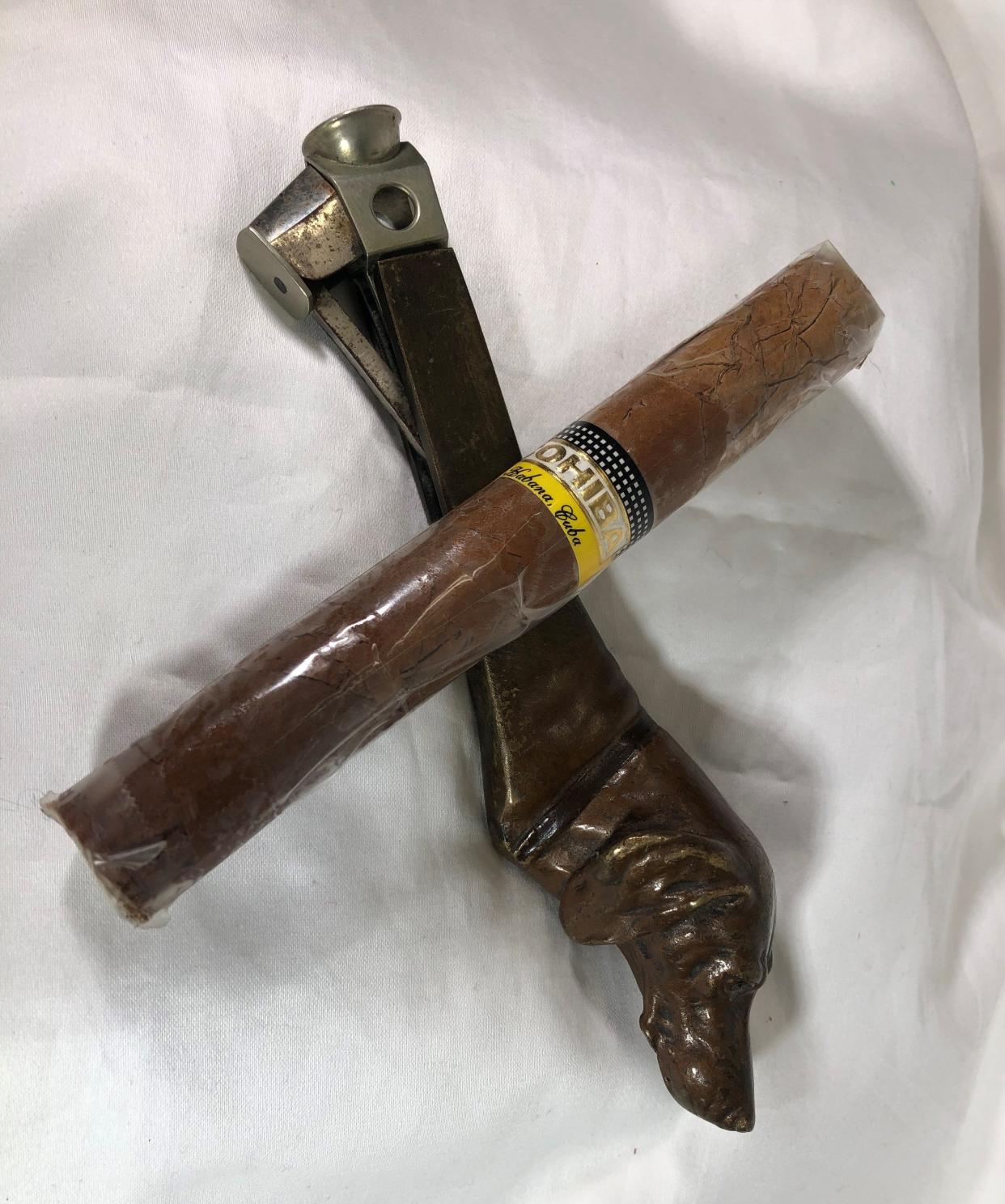Antiques: Cigar cutters remain an object of desire among many collectors

- Oops!Something went wrong.Please try again later.
Despite all the funky weather this past winter, it seems that the Coachella Valley made it through mostly unscathed. And notwithstanding all the crazy things going on in the world these days — elections, inflation, wars, pandemics and political extremism, just to name a few — our desert economy was buoyed once again with the arrival of tourists by the planeload, especially those from Canada.
So, let's sit back and briefly celebrate another successful season, perhaps even by lighting up a cigar. But to do so, however, we need a cigar cutter, and that's where this article is going.
Of course, cigars are little more than conveying instruments for tobacco, the history of which goes all the way back to the Mayan days, some 5,000 years ago. It was believed to hold medical benefits — definitely a miscalculation — and was both smoked and chewed in manners not unlike today. We can blame Columbus for introducing it to the western world in the late 15th century, and it was quick to catch on in Europe.
During the next 100 years, the use of tobacco became widespread throughout the continent. By then, Cuba had been recognized as providing the ideal climate to grow the notoriously fussy leaf, and factories in Spain utilizing Cuban tobacco were among the first to turn out commercially-made cigars.
Evidence suggests that the first Cuban tobacco in any quantity appeared in America around 1762. By that time, there were already several hundred cigar rollers in Cuba and tobacco seed was being experimentally planted in a variety of similar climates. Nonetheless, it wasn't until the Civil War a century later that Cheroots established themselves as status symbols in America.
Among the most notable adherents was Union general and later president Ulysses S. Grant who was known to smoke a dozen or more a day. Not surprisingly, his death following the war from throat cancer was almost preordained. Later enthusiasts who rivaled Grant in their cigar smoking habits included George Burns, Winston Churchill and Samuel Clemens, all of whom somehow managed to live to ripe old ages.
As for cigar cutters, they too came into being alongside the cigar itself, although knives and teeth were almost certainly the first to do the job.
Early cutters were little more than scissors but as the popularity of cigars grew, more specialized accessories were called for. The ideal cutter was one that could snip off the end of a cigar without damaging the delicate wrapper. All kinds of designs have been introduced over the years, including so-called punch cutters, V-cutters (those utilizing a V-shaped blade) and guillotine cutters.
Perhaps the most famous was the Perfecto, a V-shaped cutter that first appeared in 1890 and remains an object of desire among many collectors. Like a lot of things, the cigar cutters of today have gone high-tech with laser cutters representing the state of the art. All the same, old-school cutters still have many adherents.
Those with more money than sense might want to consider the Dragon Cutter, a $150,000 device made from solid 18k gold along with nearly 2,000 gems. I can tell you definitively that we don't have one of those at our gallery. If your taste runs to something a little more pedestrian, you have more than 5,000 choices on eBay, including some from Dunhill, S.T. DuPont and Tiffany & Co.
There are gold ones, silver ones, bronze ones and cast iron ones with prices ranging from barely more than a dollar to the middle four figures. Due to their variety, portability and relatively low prices, cigar cutters are becoming increasingly popular with both smokers and non-smokers.
Even if you don't light up, there's something to like about a well-constructed device made to do one thing and one thing only. After all, multi-tasking can be overrated.
Mike Rivkin and his wife, Linda, are long-time residents of Rancho Mirage. For many years, he was an award-winning catalogue publisher and has authored seven books, along with countless articles. Now, he's the owner of Antique Galleries of Palm Springs. His antiques column appears Sundays in The Desert Sun. Want to send Mike a question about antiques? Drop him a line at info@silverfishpress.com.
This article originally appeared on Palm Springs Desert Sun: Antiques: Cigar cutters remain an object of desire among collectors

